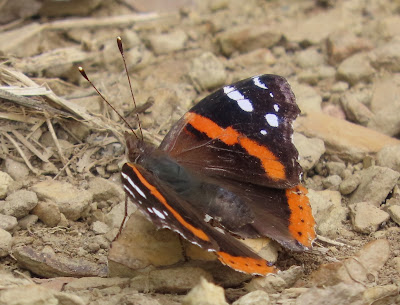Here, in our neck of the woods in Leavenworth, Kansas, USA, the 2023 City Nature Challenge was, well, challenging. Our county is part of the Greater Kansas City Metro as defined for the City Nature Challenge. Besides unseasonably cool temperatures, and viciously windy weather, there was the competition of the National Football League draft in downtown Kansas City, Missouri. Despite those circumstances, the results were excellent.
There were 294 "observers," or people who recorded observations of flora and fauna, making a total of 3,640 sightings, beginning Friday, April 28, and ending May 1 (Friday through Monday). Currently, the observations represent 807 species, and climbing, thanks to the work of more than 300 "identifiers," people proficient in the identification of various organisms. This is an increase over last year's totals of 239 observers making 1,944 observations of 651 species.
Personally, I ventured out only Friday, April 28, and Monday, May 1, both very windy days. We also put out a blacklight and sheet in the back yard the night of May 1 to see what night-flying insects we could attract. We had an invitation to make observations in Topeka, a non-participating city, on Saturday, April 29, which was of course the best weather day in the span of the event.
Plants and fungi accounted for about half the total observations. Over half the animal observations were insects and arachnids.
Most of my own observations were in Havens Park, the only "wild" park within walking distance of our home. My partner, Heidi, needs our car for work. Havens has lawns with a few trees, plus extensive oak-hickory forests, and glades dominated by Eastern Red Cedar at the summit of the park. The area has been abused by illegal dumping, and was notorious as a place for drug deals, but these crimes have subsided drastically. Illegal off-road vehicle traffic remains a problem, with the resulting erosion and gouging of the landscape. I see few people on any of the trails, including paved biking and walking trails, but I am usually there on weekdays.
I found a surprising diversity of butterflies in spite of the periodic strong wind gusts. It helped that a few flowers were blooming, and there were some mud puddles persisting from previous rain.
Few moths were seen, though turning on our porch light on one night, and deploying a blacklight on another, helped to reveal them.
The most diverse and conspicuous insects were flies, with several families represented.
Beetles were disappointingly scarce for the most part. Even lady beetles were mostly absent. Next year, I might try putting out pitfall traps.
Two-lined Soldier Beetle, Atalantycha bilineataSpringtime is bee season, and they did not disappoint. Most families were present, representing several genera. Some, like large carpenter bees, I was unable to get images of.
Sawflies and wasps were more challenging to find, and photograph, but I was happy to see any at all.
I only managed to find two kinds of grasshoppers, representing pygmy grasshoppers and short-horned grasshoppers.
Did you know that cockroaches and termites are now classified in the same order? I uncovered both kinds of insects by turning over boards and chunks of wood from logs and limbs.
Spiders were surprisingly abundant and diverse, representing several families of web-weavers, ambush hunters, and active predators.
Overall, this year's City Nature Challenge was an exciting exercise in discovery and sharing. Thanks to all who participated, in every city, and to iNaturalist (my observations in the hyperlink) for providing the platform to register individual projects and record the observations. I'm already looking forward to the 2024 edition.

















































